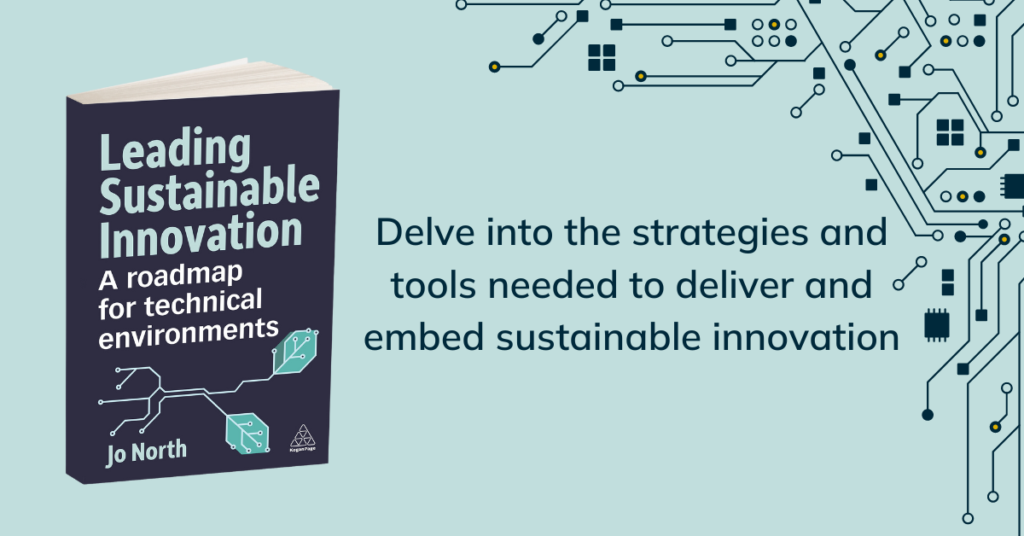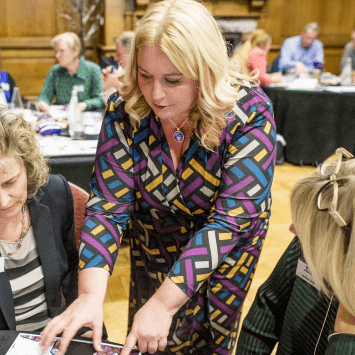Posted in Blog, Innovation by Jo North
Proof of Concept vs. Prototype vs. MVP: Key Differences
In the world of product development, terms like Proof of Concept (PoC), Prototype, and Minimum Viable Product (MVP) are often misunderstood. Each represents a different approach in the new product development process, with specific goals, timelines, and outcomes. Understanding their key differences helps product teams, innovators and entrepreneurs choose the right approach to transform an idea into a successful product. Testing ideas in the right way, at the right stage of your innovation funnel, or innovation process, is key.
It’s helpful for facilitators of design thinking, creative problem solving and innovation sprints and workshops to have a solid understanding of the differences, too, helping your participants to know how to best validate their ideas.
The terms Proof of Concept (PoC), Prototype, and Minimum Viable Product (MVP) are used across many sectors. These include digital or software development, manufacturing, healthcare, automotive, construction and more. While the core principles remain similar, their interpretation and usage can differ significantly based on context. Additionally, the order in which these stages are executed can vary depending on the goals and requirements of each sector.
Let’s take a closer look at each stage, and how they relate to Technology Readiness Levels (TRLs), commonly used in innovation development to guide products from initial ideas and research to full-scale development, market release and commercialization.

Definitions, Purpose and TRLs
Proof of Concept (PoC)
Definition
A Proof of Concept (PoC) is the first step in determining the technical feasibility of a product idea. A PoC is usually a working model designed to prove that the core concept can function in the real world. It focuses on the core problem and validates whether the idea has potential without the need for significant investment.
Purpose
The main difference between a PoC and later stages like the prototype stage or MVP is its limited focus. The PoC is not concerned with the user interface, user journey, or user experience. Instead, it answers the question, “Is this possible?” The PoC project aims to provide valuable insights into the core functionality and is often used to secure funding or attract potential investors.
TRL Mapping
A PoC aligns with TRL 2 and TRL 3, where the idea is tested conceptually and experimentally. The focus is on ensuring that the idea can move forward without committing to significant resources.
Examples
- In mobile app development, a PoC might focus on testing a new product feature, such as whether a novel algorithm can work on a specific platform.
- For medical research, an example is that a PoC might involve printing small sections of human tissue to show the feasibility of creating complex organs in the future.
- Researchers might develop a PoC to test if a new material can capture CO2 emissions directly from the air. This is tested at a small scale in a lab to show its potential for reducing greenhouse gases.
Prototype
Definition
A prototype is a tangible representation of the product that tests how the core features will function. Unlike a PoC, a functional prototype provides a better understanding of the user journey and user experience. It explores the product’s design and allows experimentation with the user interface and core features.
Purpose
The major difference between a PoC and a prototype is that the latter is built for user interaction and experimentation. Prototypes allow you to gather feedback on the product’s design concept and potential value from potential users. Prototyping provides valuable insights into whether the product meets user needs.
TRL Mapping
Prototypes are typically aligned with TRL 4 and TRL 5. This is where interactive prototypes are created, and the product’s functionality is validated in a controlled environment.
Examples
- A mobile app prototype might consist of wireframes that showcase the design and core functionality, giving the product owner and development team a way to visualize the user experience without being fully operational.
- Scientists might develop a prototype of lab-grown meat by culturing animal cells to produce small samples of edible meat. This prototype is used to test taste, texture, and scalability for future commercial production.
- Researchers might build a prototype of a wearable robotic exoskeleton designed to help individuals with limited mobility walk again. The prototype helps refine the mechanics, control systems, and user comfort.
Minimum Viable Product (MVP)
Definition
A Minimum Viable Product (MVP) is a functional product that has the minimum set of features necessary to meet the needs of early adopters. Unlike a prototype, which may focus on the design, the MVP is released to real users for feedback. The purpose of an MVP is to validate market demand and establish product-market fit with real users.
Purpose
The key difference between an MVP and a prototype is that the MVP is built for real-world use and helps product teams test the product in the market. It’s the best approach for validating the core features and making iterative improvements based on early feedback. MVP development helps avoid unnecessary development costs by delivering a product that focuses on the essential features while keeping additional features for later.
TRL Mapping
The MVP stage corresponds to TRL 6 and TRL 7, where the product is tested in relevant environments and with real users. It is a critical step in transitioning from an experimental phase to a market-ready product.
Examples
- A digital product MVP could be an app that includes the core features needed to attract early users but lacks additional features like advanced design or integrations.
- A startup launches an electric scooter-sharing MVP with a small fleet in one city. The scooters have basic functionality—GPS tracking, simple locking mechanisms, and an app for rentals. The MVP tests market demand and operational logistics before scaling up.
- Dropbox launched its MVP with a simple demo video and a basic product allowing users to store files online and access them from any device. This MVP validated demand for cloud storage without developing complex features.
- An MVP for plant-based meat, like Beyond Meat‘s first product, focused on a single type of meat alternative (burger patties). The MVP tested consumer interest and taste preferences, setting the stage for broader product lines such as sausages and chicken substitutes.
For more information on how to facilitate an MVP workshop, take a look at my article here.

Fundamental Differences: Comparing PoC, Prototype, and MVP
| Aspect | Proof of Concept (PoC) | Prototype | Minimum Viable Product (MVP) |
| Definition | A test to prove the technical feasibility of an idea. | A tangible representation of the product to test design, flow, and functionality. | A functional product with enough features to validate market demand. |
| Purpose | Validate whether the idea or technology can work in the real world. | Refine the user experience, user interaction, and design. | Test the market demand and establish product-market fit with real users. |
| Common in Sectors | Technology, Healthcare, Manufacturing, Aerospace | Automotive, Construction, Digital Products, Industrial Design | Software, Technology, Manufacturing, Consumer Products |
| TRL Stage | TRL 2–3: Early experimentation and concept validation | TRL 4–5: Functional testing in controlled environments | TRL 6–7: Tested with real users in relevant environments |
| Focus Area | Technical feasibility of a specific feature or approach | Testing design concepts, core functionality, and usability | Testing the core features with a target audience and early adopters |
| Example | A lab experiment validating a new material in manufacturing. | A physical prototype of a new car model tested for safety. | A software app with basic features for early feedback. |
| Cost | Low—minimal resources to test core idea | Medium—requires resources for physical or digital models | High—requires more resources as it is closer to a market-ready product |
| User Interaction | None—primarily for technical teams | Limited—used internally or with small test groups | Full—released to real users for feedback |
| Development Phase | Early in the process, first step before significant investment | Mid-stage, next step for design testing | Final stage before full-scale development |
| Risk | Low—only tests core feasibility | Medium—testing design and user interface | High—testing with real-world users can lead to market failure or success |
| Feedback Cycle | Minimal—internal team or potential investors | Medium—potential users in controlled environments | High—gather feedback from real users for full product development |
| Examples by Sector | – Healthcare: Testing new drug compounds. – Aerospace: Evaluating new propulsion technology. | – Automotive: Testing a concept car’s design and safety. – Construction: Creating a model building for structural analysis. | – Software: Releasing a basic app to test features. – Consumer Electronics: Launching a first version of a new wearable tech device. |
PoC vs. Prototype
The poc vs. prototype comparison focuses on scope. A PoC explores the core problem and technical feasibility, while a prototype explores design and user interaction. The product prototype provides a tangible representation of the product that tests user-facing aspects.
MVP vs. Prototype
The mvp vs prototype distinction lies in their real-world application. Prototypes are tools to test ideas, while MVPs are fully operational products designed for real users. MVPs focus on validating the product-market fit by testing the core features with early adopters.
Choosing the Right Approach
In the project discovery phase, deciding whether to pursue a PoC, prototype, or MVP depends on the stage of your product idea and the resources available. A PoC helps validate feasibility, a prototype validates design, and an MVP validates market fit. Each has a specific purpose in the product development process, and selecting the right one is critical to ensuring the chances of success.
Development Costs and Risks
PoCs require fewer resources and help avoid unnecessary development costs by validating the core concept early. Prototypes are more expensive but offer valuable insights into user needs. MVPs, being closer to a full-fledged product, require the most resources but offer the clearest path to finding market demand.
Iterative Process and Best Practices
MVPs are part of an iterative process. As you gather user feedback, the MVP evolves toward a final product. Following best practices at each stage ensures the product can meet both technical and market challenges.
Contextual Differences Across Sectors
Technology and Software Development
In technology and software development, the focus is often on validating technical functionality, user experience, and market fit. A PoC explores whether a particular technology can solve a problem. A prototype tests the design and user interaction. An MVP helps validate market demand with real users.
In this sector:
- The PoC ensures that the core technology can work in a real-world setting.
- The Prototype refines the design, making sure that the user interface and user journey meet the expectations of early adopters.
- The MVP is the functional product that gets into the hands of real users for feedback and validation.
However, in software, these stages often follow a linear path: PoC → Prototype → MVP. But even here, there are situations where an MVP development might be a priority to quickly test market needs, skipping over the PoC if technical feasibility isn’t a primary concern.
Manufacturing
In manufacturing, the order of these stages can change, and the meaning of each step connects more closely to physical product creation and testing. Here:
- A PoC might be more focused on the technical feasibility of a specific production method or material.
- The Prototype could be a scaled-down or simplified version of the actual product, built to test how well the product functions mechanically or structurally.
- An MVP in this context could refer to an initial product release that meets basic market needs with only essential features, aimed at validating the product-market fit.
In automotive or aerospace, for instance, a prototype is often a fully functioning model used for rigorous testing, like crash testing or flight simulation. Here, a working model serves more to test physical durability than user experience.
In some cases, manufacturers might skip the MVP phase altogether if their market demands a near-final product for launch, especially in high-stakes industries like aerospace or medical devices, where releasing anything less than fully polished could lead to failure.
Healthcare and Medical Devices
In healthcare, each phase involves stringent regulatory scrutiny and patient safety concerns, meaning that the order of PoC, Prototype, and MVP can vary.
- A PoC in healthcare might focus on the technical feasibility of a new medical device or treatment, often tested in a lab or small-scale trials.
- A Prototype could be useful for refining both the device’s functionality and usability, including user interaction with healthcare professionals.
- The MVP might need to meet strict regulatory requirements (such as FDA approval in the US) even before real user testing in clinical settings.
In this case, the MVP is not about quickly testing market demand but ensuring that the product is safe and effective under controlled conditions. The MVP could serve as the first device used in real-world medical trials, not a commercial launch.
Construction and Architecture
In construction and architecture, a Prototype might be the first full-scale structural test or a smaller version of the final product (such as a model of a building or infrastructure project). Here:
- A PoC could be related to validating new construction methods, materials, or technologies, like sustainable building techniques.
- A Prototype might be a physical or virtual model used to test aspects of the design or materials.
- An MVP could be the first building that meets basic structural integrity and functional requirements, allowing the team to gather feedback from potential tenants or users, improving subsequent iterations.
In this sector, PoC and prototyping processes are critical to ensuring that the end product meets both regulatory standards and user expectations. However, like in manufacturing, MVP development may take a different form, as the first iteration of a project could already be close to a complete product.
Variation in the Order of Stages
Although these phases often follow a linear path, they don’t always occur in the same order. The order depends heavily on the development team’s objectives, potential users, and target audience.
PoC Followed by MVP
In some projects, where market demand is uncertain but technical feasibility is clear, it may make sense to move directly from a PoC to an MVP. This approach might be common in digital products. Here it’s possible to build and test an MVP quickly with real users to validate the market before investing in a full-scale product prototype.
Prototype First
In contrast, in sectors like construction, automotive, or industrial design, a prototype may come before both a PoC and an MVP. Here, building a functional prototype allows teams to test physical designs or materials in the real world to ensure the product meets user needs before committing to any full-scale testing or commercialization.
Skipping PoC or MVP
There are cases where a PoC may not be needed at all, especially if the technical feasibility is well understood. For example, in mobile app development, with proven technologies, the team might skip the PoC and move straight into prototype or MVP development. Similarly, in industries like healthcare, an MVP might not be appropriate. A complete product must meet stringent regulatory standards before it can be tested on users.
How Context Influences Costs, Feedback, and Risk
Costs
In software development, a PoC is usually a low-cost project to validate a product idea. But, in automotive or aerospace, building a prototype can involve significant resources for large-scale testing.
Feedback and Risk
In sectors like manufacturing or construction, launching an MVP may carry higher risks. Products like cars, buildings, or medical devices cannot afford to fail when tested with real users. In digital products, the user interface or additional features can be tested iteratively with early adopters with lower stakes.
Understanding the key differences between PoC, prototype, and MVP stages is crucial in the world of product development, design thinking and innovation. Each serves different purposes, and choosing the right one can make or break the development process. When testing an idea’s technical feasibility, validating its design or market fit, selecting the appropriate stage is important for creating a successful innovation.
Leading Sustainable Innovation
For a deeper dive into driving meaningful change and implementing successful sustainable innovation in your organization, check out my book, Leading Sustainable Innovation. It offers practical insights and strategies to help you lead the way in making a lasting impact. Whether you’re starting a Proof of Concept or scaling up a fully-developed product, my book will guide you through every step of the innovation process.



